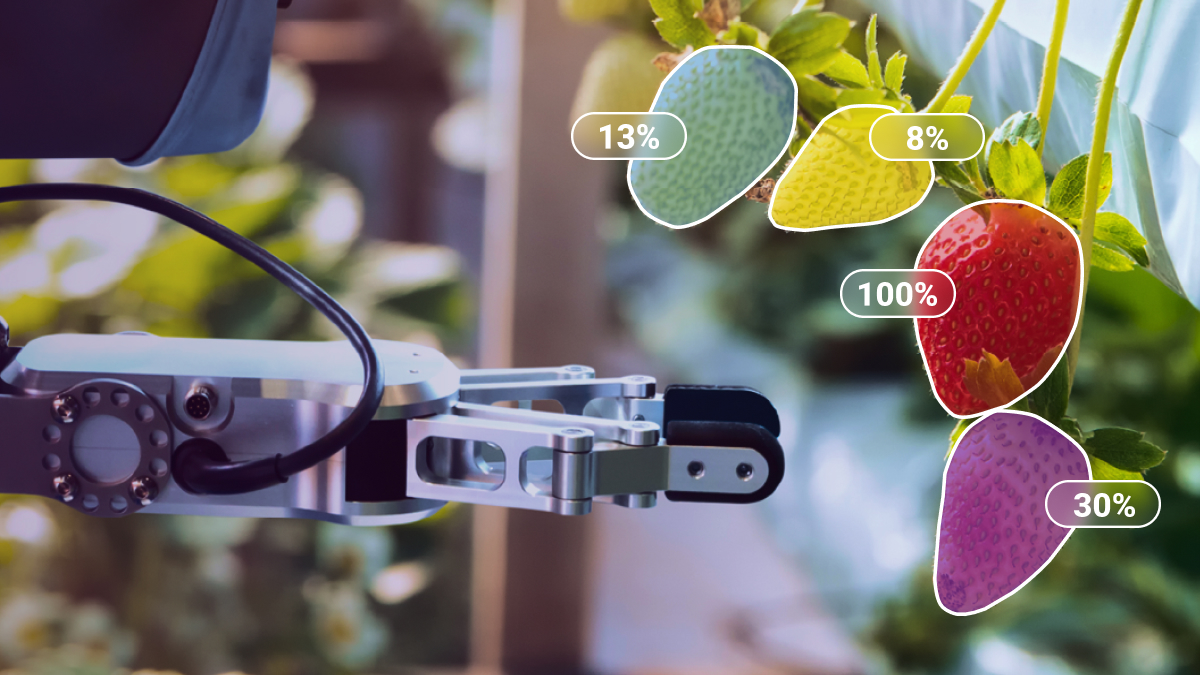Fruit-Picking Robots are Helping Farmers Overcome Labor Shortages
Robot technology has significantly advanced over the past couple of years. Robots are now used to build cars in factories, sort goods in warehouses, and, a little creepily, make us safer by patrolling our streets. But there are some things robots still cannot do – things that sound quite basic in comparison. Like picking an apple from a tree. Thanks to the latest advancements, robots can now assist farmers in harvesting their crops and help them overcome labor shortages. In this article, we will take a look at some of the most interesting technologies used to help farmers and the data annotation that’s required to create them.
Strawberry Picking Robots
California produces about 90% of the nation’s strawberries, but severe drought and worker shortages are threatening the fruit. In addition to this, another issue is that picking strawberries is hard labor where the worker needs to be hunched over for most of the day. This is why it’s hard to find people who are willing to do this kind of work. Fortunately, help has arrived in the form of AI. Robots now work in hydroponic fields, which is a type of farming that can use up to 90% less water than traditional methods.They roam through these fields and pick ripe strawberries from vines. They use computer vision cameras to locate the strawberry and determine if it’s ripe for picking. According to reports, these robots pick strawberries with a 95% accuracy level.

Zapping Weeds With Lasers
Walking around a field and manually picking weeds out of the ground is a very labor-intensive task. While it is possible to spray herbicides on weeds, chemical herbicides can kill pesky plants, but they can also contaminate water and affect soil health. Weeds can be pulled out by hand, but it’s unpleasant work, and labor shortages are already a huge problem in the agriculture industry. Fortunately for farmers, there are robots that can zap weeds with lasers. Basically, the robot drives itself through the crop rows and uses cameras to scan the ground. An onboard computer powered by AI identifies weeds, and the robot’s carbon dioxide lasers then zap and kill the plants. The Autonomous Weeder can eliminate more than 100,000 weeds per hour and weed 15 to 20 acres of crops in one day.
What Types of Data Annotation are Necessary to Create AI Robots for the Agriculture Industry?
Both the weed-zapping robot and the strawberry-picking robot need to be able to navigate in their immediate surroundings, which means that 3D Point Cloud Annotation will be necessary. These 3D Point Clouds are produced by LiDAR and are a digital representation of how an AI robot sees the physical world. In this particular situation, an orchard or a harvesting field will need to be scanned by LiDAR, and data annotators will annotate the 3D Point Cloud with techniques such as labeling to identify the fruits, trees, and anything else the robot might encounter. More detailed types of annotations, such as semantic segmentation, might also be necessary to help the robot determine if a strawberry is ripe for picking. After all, a ripe strawberry has a particular color to it, and the robot needs to distinguish the necessary shade of each color.
In addition to this, both robots use computer vision cameras to identify the needed objects. This means that images with weeds and strawberries will need to be used as training data and will need to be annotated with techniques such as image classification, instance segmentation, and boundary recognition.
Trust Mindy Support With All of Your Data Annotation Needs
Mindy Support is a global company for data annotation and business process outsourcing, trusted by several Fortune 500 and GAFAM companies, as well as innovative startups. With nine years of experience under our belt and offices and representatives in Cyprus, Poland, Romania, The Netherlands, India, and Ukraine, Mindy Support’s team now stands strong with 2000+ professionals helping companies with their most advanced data annotation challenges.




